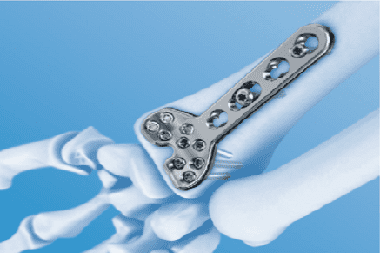Traumatology >>>> Osteosynthesis - what is it?
Osteosynthesis - what is it?

For bone injuries, fixators are used to connect bone fragments in a surgical procedure, this kind of connection is called "osteosynthesis". The fixators have different purposes and locations: intraosseous, periosteal, combined. Intraosseous retainers are called implants and are left permanently inside the body. This kind of osteosynthesis is called immersion.
External osteosynthesis is carried out by means of distraction compression apparatuses, which allow holding fasteners (pins, rods) through the bone, but fixing the fragments above the surface of the skin in a special external fixation apparatus.
For osteosynthesis, screws, plates, pins, knitting needles, wire and other fasteners are used.
Modern osteosynthesis allows you to penetrate and install fasteners using minimally invasive methods: through incisions or punctures.
Indications for the use of osteosynthesis are:
- fractures with divergence of fragments,
- intra-articular fractures,
- the danger of a closed fracture turning into an open one,
- inability to carry out a closed reposition of fragments,
- unsuccessful conservative treatment (repeated displacement of fragments),
- non-healing fracture,
- false joint.
It is impossible to carry out osteosynthesis with a large area of damage with a fracture, with osteoporosis, with contamination and infection of tissues.

Read

Read



























